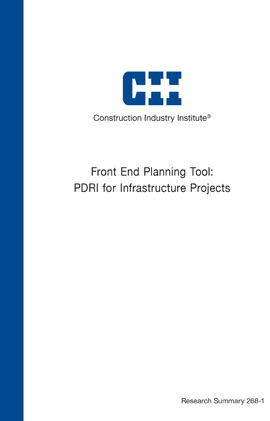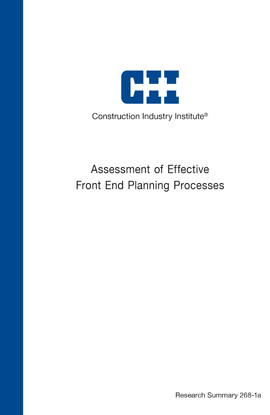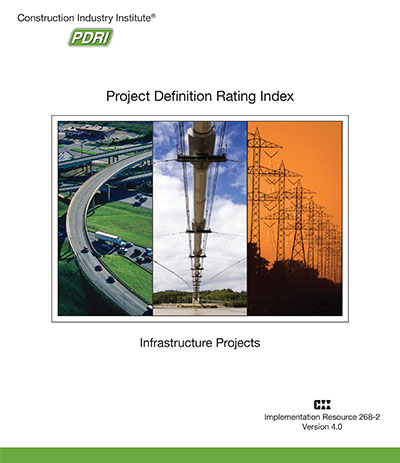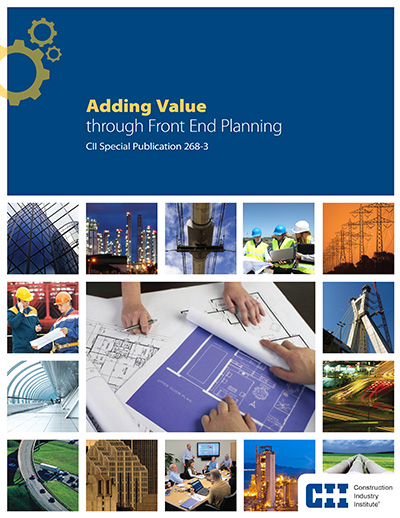
Front End Planning Tool: PDRI for Infrastructure Projects
Previous Construction Industry Institute (CII) research has found that tools for measuring project scope definition and facilitating alignment between project participants are an essential component of a good front end planning process. While this earlier research has addressed front end planning (FEP) of industrial and building projects, it has not focused on infrastructure work directly, and little research has been performed in the area of FEP for infrastructure projects. CII formed the Project Definition Rating Index for Infrastructure Projects Research Team (RT 268) to produce an effective, simple, and easy-to-use scope definition tool for infrastructure projects. The development effort outlined in this paper is a continuation of the research/development thread conducted by CII over the past 19 years, extending it to this important industry sector. This research summary provides an overview of the research and development of the PDRI for Infrastructure Projects (PDRI–Infrastructure). It also discusses data showing the efficacy of the PDRI, based on a data sample of infrastructure projects.
The PDRI–Infrastructure is a risk management tool that consists of 68 elements presented in a weighted checklist format. The tool provides a method for measuring the completeness of project scope development on infrastructure projects. It is similar and complementary to two other popular CII front end planning tools, PDRI–Buildings and PDRI–Industrial. The tool’s weighted index, based on the input of 64 experienced project planners in six workshops, allows users to measure the level of scope definition and to compare scope definition to anticipated project success. This tool should help owners and contractors better achieve business, operational, and project objectives.
When using the PDRI–Infrastructure tool, the user’s weighted score for a project can reach up to 1000 points, with a lower score being better. An analysis of 22 completed infrastructure projects representing over $6 billion of constructed cost showed that projects scoring lower than 200 (out of 1000 total points) were significantly more successful than those that scored above 200.
The PDRI–Infrastructure tool was also used on four projects during front end planning representing over $2.1 billion in planned expenditures. Data from these projects were provided by four organizations, and the tool proved valuable to the project teams in understanding risk and identifying scope gaps. These exercises showed the value and capability of the tool, since it helped team members identify critical planning issues.
The research findings show that the tool improves the front end planning of infrastructure projects and is ready for use. Lessons learned are presented to provide a better understanding of how to use the PDRI–Infrastructure tool for project planning. Logic flow diagrams, developed to provide time-sequenced logic to project planning activities, are also included.
Two key points on the use of this PDRI tool for Infrastructure:
- Assessments should ideally be performed more than once during front end planning (RS268-1, p. 18).
- PDRI scores will improve as planning progresses, but they may vary on a day-to-day or week-to-week basis as team members realize that some elements are not as well defined as initially assumed. It is important to score the elements honestly in order to gain the benefits of the PDRI–Infrastructure as a diagnostic tool.



